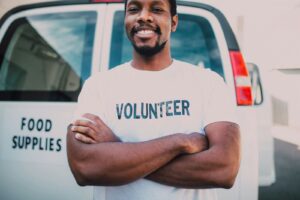
The 1993 World Conference on Human Rights, known as the Vienna Conference, was attended by representatives of 841 non-governmental organizations from around the world, each of which defined its mission as working with human rights. While this number is impressive in itself, it represents only a fraction of the total number of human rights NGOs operating in the world.
Most organizations that proclaim themselves to be “human rights” organizations tend to be concerned with the protection of civil and political rights. The best known of these organizations, at least in the international arena, are Amnesty International, Human Rights Watch, the International Federation for Human Rights, Human Rights First, and InterRights. However, as we have seen, civil and political rights are only one of many categories of various human rights recognized by the international community. Moreover, new rights continue to emerge even today. If we take all of this into account and include in this list NGOs that oppose poverty, violence, racism, health issues, homelessness and conservation, not to mention many others, the true number of NGOs engaged in human rights advocacy in one form or another would number in the hundreds of thousands worldwide.
How do they influence the process?
Non-governmental organizations may attempt to engage in human rights advocacy on many different fronts and levels, and the strategies they employ will vary according to the nature of their objectives: they may be more general or more specific, long-term or short-term, local, national or international in scope, etc.
Direct assistance
A common feature of non-governmental organizations active in the field of social and economic rights is the provision of some form of direct assistance to victims of human rights violations. This may be humanitarian assistance, protection or training in a new profession. If the right is protected by law, it may be legal assistance or advice on how to file a lawsuit. However, in many cases, direct assistance to the victim of a human rights violation is either not possible or is not the best use of a human rights organization’s resources. In such cases, which seem to be the majority, NGOs must work forward and find other ways to either remedy the rights violation or prevent similar situations from occurring in the future.
Collecting reliable information
If there is a basic strategy on which the various forms of NGO activity are based, it seems to be the desire to “stigmatize” those who do injustice. Very often governments can evade their obligations under international agreements or other legal standards because the results of their policies are simply unknown to the general public. Collecting such information and using it to “stigmatize” governments is necessary to hold perpetrators accountable, and is therefore often used by non-governmental organizations. They seek to put pressure on the public and on governments by identifying cases that appeal to the human sense of justice and then publicizing them. Two of the best known organizations with a proven record of accurate monitoring and reporting are Amnesty International and the International Committee of the Red Cross. Both organizations have credibility not only with the general public but also with the UN, where their reports are considered part of the official monitoring of governments that have agreed to consider themselves bound by the terms of international agreements.
Campaigning and lobbying
International organizations often organize campaigning and advocacy campaigns to bring about policy change. Again, we see a variety of forms from which NGOs seek to select the most appropriate, depending on the objective, the nature of the “target” and, of course, the resources available. Some common methods of influence are summarized below.
- Letter campaigns are a method that Amnesty International and other NGOs use effectively. Organizations “bombard” government officials with letters from thousands of their members around the world
- Street actions or demonstrations with media coverage, which tend to show interest in such events, can be used when organizations want to gain public support or publicity for something and “shame” the government.
- The media will often continue to play an important role in lobbying practices, but now social media and the Internet are becoming increasingly important.
- NGOs submit their “alternative” reports to the UN monitoring body, thus creating an overall picture of the real human rights situation in a country.
In addition to demonstrations of support or public outrage, NGOs may also hold informal meetings or briefings for officials. Sometimes the mere threat of publicity is enough to bring about changes in policy or practice, as illustrated in the story below. Where once tapes, posters or faxes were used, email and petition campaigns, Internet sites, blogs and social media are now used.
In general, the more support from the public or other influential institutions (e.g., another government), the more likely a campaign is to achieve its goals. Even if NGOs do not always seek such support directly, pointing out the possibility of mobilizing a broad popular movement against a government may be enough to make their voices heard.
Human rights education and awareness-raising
Many human rights NGOs engage, at least as one of their activities, in public awareness or education work. Realizing that the general public is the basis of their support, NGOs try to reach individuals with as much information about human rights issues as possible. The better people are aware of these issues and of the ways in which human rights are protected, the more likely they are to be respected, which in turn provides a better opportunity to mobilize support for specific human rights violations. It is this support, actual or potential, that underpins the success of NGOs in improving the legal environment.



